
Publisher:
Bonnie King
CONTACT:
Newsroom@Salem-news.com
Advertising:
Adsales@Salem-news.com

~Truth~
~Justice~
~Peace~
TJP
Feb-16-2014 13:46

 TweetFollow @OregonNews
TweetFollow @OregonNews
VA Ignores Medical Conditions Linked to El Toro
Robert O'Dowd Salem-News.comTCA exposure also places a person and increased risk of Parkinson’s disease.
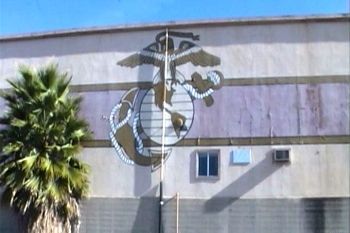 MCAS El Toro in Irvine, California, is a contaminated former military base on the EPA Superfund list. |
(SOMERDALE, NJ) - I didn’t want to file a VA disability compensation claim. It’s just not worth the effort. The VA’s reputation is terrible. This is the last place to look for disability compensation and medical help. However, another El Toro veteran after several weeks convinced me to apply for a VA disability. He’s argument was to do it for your wife, “You’ve already had one cancer [a second cancer was discovered in 2012] and can’t buy life insurance. The odds are you’ll be checking out before her.”
 |
I filed a VA disability and compensation claim in 2008 and won approval for bladder cancer, hyperprolactinemia, and tinnitus. The cumulative rating was 30%. I had no idea at the time that hyperprolactinemia in a male will cause prostate growth. In my mid-30’s, a physician did the infamous Digital Rectal Exam or DRE and told me that I had a prostate gland the size of a 70 year old man and to expect medical problem from it. The VA never made the connection of hyperprolactinemia to my three prostate operations, chronic prostatitis (pain) and ED. I’ve had this conditions for 28 years. There’s no cure for chronic prostatitis. But, I had other medical conditions, too. Through experience, I knew that a veteran needed a medical nexus opinion to support current medical conditions, which were “at least as likely as not” caused by military service.
INDEPENDENT MEDICAL EVALUATION
I asked Dr. Harrison Butler to review my service and medical records and provide a medical opinion to determine if there was a basis for service connection. Dr. Butler, a former Army medical officer, called me at home on Sunday. He said that it was his opinion that my disabilities should be rated at 100% and that I was remised in not raising hell with the VA. I was risk from premature death from exposure to chemicals and radiation at El Toro.
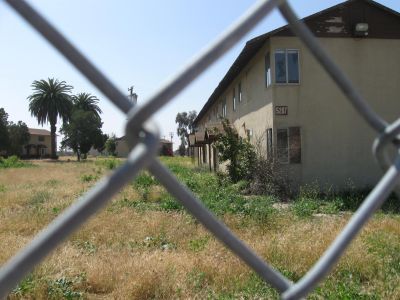 MCAS housing, Salem-News.com photo by Bonnie King |
Dr. Butler’s opinion supported my medical conditions were caused or substantially or materially contributed to by the conditions encountered while on active duty at El Toro. In July 2013, I met with a Decision Review Officer (DRO) in Philadelphia for an informal hearing on my appeal. My VA attorney represented me. After the hearing, I had several compensation review examinations at the VA Medical Center in Philadelphia.
The hearing had to be delayed since I had just received 44 direct beam radiation treatments for prostate cancer and didn’t have the physical strength to attend an earlier DRO hearing.
The VA denied service connection in November 2013, but the denial was not received by my attorney or myself and only discovered after an email follow-up by me to the Philly RO in February 2014. No doubt a copy is contained in the Philly RO office files. As far as the original Supplemental Statement of the Case and the reasons for the VA denial, the VA will no doubt claim that it was lost in the mail (if it ever made it to the mail).
I’m reminded of the long tradition of Marines who are known for running to the sound of guns, not from them. Once we receive the VA’s SSOC, we will appeal the VA decision to the Veterans Board of Appeals in Washington. It’s only a three hour train ride from Philly. For the VA, there’s always hope that at 71 and not in the best of shape that I may die before the Board hears my side of the story. As long as I have breath, they can expect a fight.
Dr. Harrison Butler’s IME is reprinted below; it may be helpful to my brother Marines, especially those who worked in Hangar 296.
OPINION
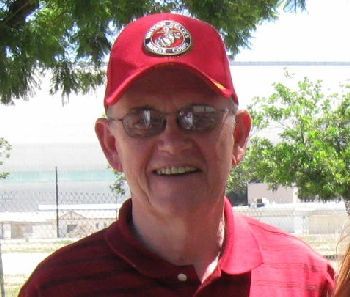 Robert O'Dowd |
- It is my opinion that, more likely than not, the transient ischemic attack (TIA) suffered by Mr. O’Dowd was caused by small vessel disease in his brain.
- It is my opinion that, more likely than not, this small vessel disease has been caused by the radiation he received while stationed at El Toro MCAS.
- It is my opinion that, as likely as not, the cerebral atrophy seen on MRI was caused by the two years of chronic irradiation while on active duty.
- It is my opinion that, as likely as not, his exposure to chronic Ra 226 caused increased prolactin levels by changing the pituitary gland so that it produces excess prolactin.
- It is my opinion that, as likely as not, the erectile dysfunction suffered by Mr. O’Dowd is caused by a combination of microvascular disease, increased prolactin levels, and chronic prostatitis.
- It is my opinion that, as likely as not, his chronic anxiety level is caused by changes in the brain caused by ionizing radiation.
- It is my opinion that, as likely as not, Mr. O’Dowd’s hypertensive heart disease is directly caused by ionizing radiation received while in the Marine Corp.
 |
- It is my opinion that, as likely as not, the cold intolerance, pain, and paleness in his hands and fingers are caused by chronic exposure to ionizing radiation and exposure to vinyl chloride.
- It is my opinion that, as likely as not, the sleep disturbance is caused by a combination of problems: by nocturnal urinary frequency secondary to his chronic prostatitis, caused by exposure to TCE; by chronic ionizing radiation that directly affects the function of the brain; and by vinyl chloride disease. TCE is changed to vinyl chloride (VC) by enzymes in the liver. Vinyl chloride disease is a group of symptoms categorized by the EPA as sleep disturbances and intolerance to cold in the hands and feet, among other things.
- I strongly agree with Dr. Bash and Dr. McNamara that the chronic prostatitis, benign prostatic hypertrophy, interstitial cystitis, hyperactive bladder, and the bladder tumor are directly caused by the exposure to trichloroethylene (TCE) and trichloroethane (TCA). Both of these chemicals have been shown to be carcinogenic, and both were used daily at Hangers 296 and 297 as degreasing agents until the mid 1970s.
- I strongly disagree with the statement by Gerald A. LeBlanc, Ph.D., that he is “unaware of any hard evidence for a link between exposure to TCE or related compounds and prostatic hyperplasia or elevated prolactin levels.”
- It is my opinion that, more likely than not, Mr. O’Dowd’s increased prolactin level is directly related to the development of chronic prostatitis, prostatic hyperplasia, and interstitial cystitis.
- It is my opinion that, more likely than not, the cancer of the bladder was directly caused by exposure to TCE.
- My opinion is based on my review of the service medical records, medical records after discharge from the military, the relevant medical literature, and my thirty years as a Board Certified general and vascular surgeon, with experience in the diagnosis and medical and surgical treatment of vascular disease. As a General Surgeon, I have had training in cancer surgery, neurosurgery, urologic surgery, emergency medicine, and trauma.
MEDICAL HISTORY
- Mr. O’Dowd entered the Marine Corp as a healthy young man and was assigned to the El Toro Marine Corp Air Station (MCAS) in January of 1963. He spent 20 months in a hanger where airplane hydraulics, guns, and motors were cleaned with TCE. Later, the Marines were given TCA to clean the machines because it was believed that it was less harmful than TCE. However, they continued to use TCE in spite of the fact there was concern about the safety to those exposed to it. As time went on, the Marine Corp became sensitive about the use of both TCA and TCE and ordered the young Marines at El Toro MCAS to cover up the 50 gallon barrels. If asked what they used to clean the airplane parts, they were to say “soap and water.” According to the Marines, they each used from one to five gallons a day of the TCE or TCA. The Environmental Protection Agency (EPA) reported that TCE use at El Toro was discontinued by the mid 1970s. However, this has been disputed by some Marines who were stationed there in later years. They stated that these volatile organic compounds (VOC) were used until the 1990s.TCA was reported by the EPA to be in the groundwater throughout the base and in the soil and groundwater under Site 24, the source area for the TCE plume spreading into Orange County and the area where Marine C-130 transports were maintained. This contaminated water was used for drinking, showering, and cooking. It was also used in the base swimming pools and for irrigation. Inhaling the chemicals as vapor is especially damaging to the liver and the kidneys. The Marines inhaled the vapors in the shower and as the chemicals evaporated while they worked. It was in the water they drank and the food they ate.
 |
- After discharge from the Marines, Mr. O’Dowd started having headaches that lasted several seconds and were very intense. He also developed abdominal pain, nausea, and diarrhea. The symptoms slowly became worse with the passage of time. In the 1980s, the symptoms became so severe that he could not ignore them, and he went for help. He was diagnosed as having duodenitis and gastritis.
- Marine O’Dowd worked and lived in this radioactive, toxic place until October of 1964. He was transferred out of El Toro and spent the rest of his 52 months of active service performing a much safer service to his country. Since that time he has not been exposed to VOCs or radioactive substances. He has worked as an auditor, an accountant, and a financial manager with the Federal Government for over 30 years.
- His health was okay until the middle 1980s when he started having significant health problems. It was during this time that he was diagnosed as having hypertensive heart disease and Hypercholesterolemia. The headaches that he had since active service became more severe. He also started having significant problems passing urine and severe perineal pain (pain in his genital region). This was diagnosed as benign prostatic hypertrophy, and in 1987 he had his first transurethral prostatectomy (TURP). His physicians were concerned that he was having prostatic hypertrophy at such a young age, and on further evaluation he was found to have an increased level of serum prolactin. A CAT scan of his brain did not show a pituitary tumor (one of the causes of increased prolactin) so he was placed on medications to decrease the prolactin. The side effects of the Cabergoline the doctors prescribed to decrease the level of prolactin were uncomfortable to say the least. It caused him nausea, heartburn, constipation, and nervousness, and it aggravated his already present sleep disturbance. This prompted his doctors to try to make him feel better by putting him on more medicines for sleep and for gastroesophageal reflux disease (heartburn).
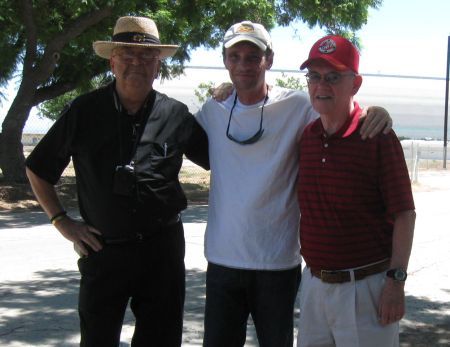 Former El Toro Marines John Uldrich, Tim King and Robert O'Dowd |
- On August 13, 2004, Mr. O’Dowd awakened to find numbness of the right side of his body. He called his family physician, Ken Panitch, M.D., who advised him to take an aspirin and proceed to the emergency room. He was diagnosed with a possible transient ischemic attack of his left cerebral artery (transient stroke or TIA). He was referred to a neurologist, Manzoor Abidi, M.D. who noted that an MRI showed small vessel disease but no acute infarction (no dead brain tissue). Carotid ultrasound did not reveal evidence of narrowing of the large arteries in the neck that supply blood to the brain.
- In 2005, Mr. O’Dowd again started passing blood in his urine, and a cancer was discovered in his bladder. He had a transuretheral resection of a transitional cell carcinoma, followed by chemotherapy. So far he has had no recurrence of his bladder cancer, but he is at extremely high risk of having another. He has to have regular transuretheral cystoscopies in order to catch any recurrence early.
- His health has continued to deteriorate. In June of 2009, he continued to have debilitating headaches, and a MRI of the brain showed symptoms of premature aging which is one of the many problems associated with chronic exposure to low levels of radiation. He had brain atrophy (shrinkage) and advanced small vessel disease. This explains the past history of TIA and probably the debilitating headaches. Lately Mr. O’Dowd has had new symptoms of ataxia (unsteadiness) when walking. Ionizing radiation exposure has been shown to increase the risk of Altzheimer’s Disease, which includes the last three new symptoms: ataxia, stumbling, and forgetfulness. [In 2013, I was diagnosed with prostate cancer.]
DISCUSSION
 |
- It is apparent to me that Mr. O’Dowd has a lot of serious ailments for a man who does not smoke or drink and who keeps his weight under good control. Also he has had early onset of disease like benign prostatic hypertrophy. That begs the question, what is causing all of these problems? His only positive family history is a history of cardiovascular disease in a brother. The variable that we know is that as a young Marine he was stationed at EL Toro MCAS. We also know the area that Mr. O’Dowd worked, slept, showered, drank water, and ate foods cleaned and cooked in the water was closed in 1999 because of toxic contamination with ionizing radiation and volatile organic compounds. Both were found in the ground water supply. Also we know that both the radiation and VOCs are carcinogenic.
- Ionizing radiation has been shown to injure the vascular intima (the smooth inside lining of arteries and arterioles [very small arteries]).1 If the arteries are very small as they are in the brain, the injured arterioles thrombose (clot off) and the tissue being supplied by the arteriole dies. If enough arterioles thrombose in the brain, one will see brain atrophy (shrinkage). Brain atrophy can cause headaches, mood changes, peripheral neuropathies, and other symptoms. It has also been shown that very low dose irradiation causes changes in the morphology (anatomy and function) of the neuron (the primary cell in the brain). It was shown that exposure to ionizing radiation significantly modifies neurotransmission, resulting in multiple effects on the brain and behavior. Persistent changes in brain bioelectrical activity occur at low thresholds and increase as the dose increases. It was also noted that after exposure to a larger dose, progressive degeneration of brain cortex develops. With progressive degeneration of the brain, many symptoms can occur. Among them are the development of ataxia, stumbling, falling, changes in vision, headaches, loss of memory, and dementia. Mr. O’Dowd has had bouts of ataxia, stumbling, falling, changes in vision, and headaches. He is at a high risk of developing dementia because of his exposure to radiation at El Toro. This has been described as premature aging brought on by radiation changes in the brain.
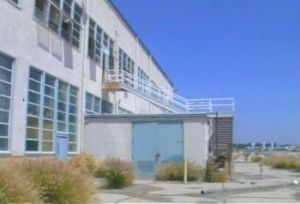 |
- Early in this disease progression, Mr. O’Dowd developed BPH (benign prostate hypertension). Because he was young when he became symptomatic, his physicians looked for a cause that was out of the ordinary. They discovered an increased serum prolactin level. Prolactin is manufactured in small amounts by the prostate, but the main source is the pituitary gland located in the brain. It has been shown that low-dose irradiation of the brain can cause changes in the pituitary that increase its output of prolactin. The exact mechanism is not well understood, but it probably has something to do with radiation changing the prolactin producing cells in the pituitary, making them autonomous. Dopamine slows or shuts off the production of prolactin normally. However, these autonomous cells do not respond to dopamine and continue to produce prolactin when it is not needed. Prolactin has been shown to cause prostatic hyperplasia that leads to BPH. The prolactin stimulated prostate grows too large, as it did in Mr. O’Dowd. He has had to have two resections to relieve symptoms. It is also believed that the hyperplastic prostate gland leads to chronic prostatitis. The effect of bladder outlet obstruction by the enlarged prostate also leads to interstitial cystitis that leads to the hyperactive bladder.
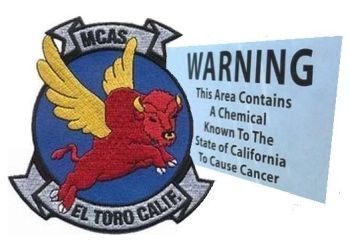 |
- TCE and vinyl chloride have profound effects on the liver and can cause liver failure from direct toxicity to the hepatic cell. Vinyl chloride has also been positively linked to a rare malignancy of the liver, hemangiosarcoma. The hemangioma found in Mr. O’Dowd’s liver has to be followed carefully, because it could be or could change to a malignant tumor.
- A direct correlation has been found for vinyl chloride exposure and Raynaud’s Syndrome. Raynaud’s Syndrome consists to severe cold intolerance of the hands. The hands become cold, pale and painful when exposed to cold temperatures. The arteriole spasm can be so severe that there can be skin lost on the fingers and hands. Mr. O’Dowd has this problem. Air conditioning can cause the vascular spasm. Raynaud’s is a painful and inconvenient problem to have.
- Sleep disturbances are not only frustrating, but can be detrimental to one’s health. Many factors cause sleep disturbances. The factors with Mr. O’Dowd are many. It has been shown that low dose radiation exposure causes difficulty sleeping. Exposures to VOCs contribute to pathological sleep disturbances. He is on several medications that cause sleep problems. Experts believe that over 50 percent of all sleep problems are due to stress. Adequate sleep is crucial to proper brain function. No less so than air, water and food. Chronic sleep loss may not only hasten the onset of aging but could also increase the severity of age-related ailments such as diabetes, hypertension, obesity, and memory loss. It has also been implicated in cardiovascular disease and cerebrovascular disease.
- Mr. O’Dowd has been plagued by anxiety symptoms since being irradiated and exposed to TCA and TCE. Exposure to these toxins can lead directly to anxiety, nervousness, and irritability. Experts have noted that low-dose irradiation of the brain also causes anxiety and irritability.
- TCA exposure also places a person and increased risk of Parkinson’s disease. Mr. O’Dowd already has symptoms consistent with early Parkinson’s.
CONCLUSION
- Mr. O’Dowd entered the Marine Corps as a young, healthy man. At El Toro MCAS he suffered injuries as severe as if he had been in a battle. He did as he was told and had faith that his superiors would not knowingly place him in harm’s way needlessly.
- Exposure to radiation and VOCs has caused him a health calamity. He has been shown to have premature aging, and this has markedly reduced the quality of his life and probably its length. He has dealt with many and varied diseases, and has shouldered this burden admirably. He will have to continue to take way too many medications each day in order to get by for the rest of his life. He will also have to be vigilant for the onset of several extremely serious diseases that he is at increased risk of getting because of his exposure at El Toro MCAS.

Bob O’Dowd is a former U.S. Marine with thirty years of experience on the east coast as an auditor, accountant, and financial manager with the Federal government. Half of that time was spent with the Defense Logistics Agency in Philadelphia. Originally from Pennsylvania, he enlisted in the Marine Corps at age 19, served in the 1st, 3rd, and 4th Marine Aircraft Wings in 52 months of active duty in the 1960s. A graduate of Temple University, Bob has been married to Grace for 31 years. He is the father of two adult children and the grandfather of two boys. Bob has a blog site on former MCAS El Toro at mwsg37.com. This subject is where Bob intersected with Salem-News.com. Bob served in the exact same Marine Aviation Squadron that Salem-News founder Tim King served in, twenty years earlier. With their combined on-site knowledge and research ability, Bob and Tim and a handful of other ex-Marines, have put the contamination of MCAS El Toro on the map. The base is highly contaminated with TCE, trichloroethelyne
You can email Bob O’Dowd, Salem-News.com Environmental and Military Reporter, at this address: consults03@comcast.net
 |
 |
 |
Articles for February 15, 2014 | Articles for February 16, 2014 | Articles for February 17, 2014



Quick Links
DINING
Willamette UniversityGoudy Commons Cafe
Dine on the Queen
Willamette Queen Sternwheeler
MUST SEE SALEM
Oregon Capitol ToursCapitol History Gateway
Willamette River Ride
Willamette Queen Sternwheeler
Historic Home Tours:
Deepwood Museum
The Bush House
Gaiety Hollow Garden
AUCTIONS - APPRAISALS
Auction Masters & AppraisalsCONSTRUCTION SERVICES
Roofing and ContractingSheridan, Ore.
ONLINE SHOPPING
Special Occasion DressesAdvertise with Salem-News
Contact:AdSales@Salem-News.com

Terms of Service | Privacy Policy
All comments and messages are approved by people and self promotional links or unacceptable comments are denied.
[Return to Top]
©2025 Salem-News.com. All opinions expressed in this article are those of the author and do not necessarily reflect those of Salem-News.com.